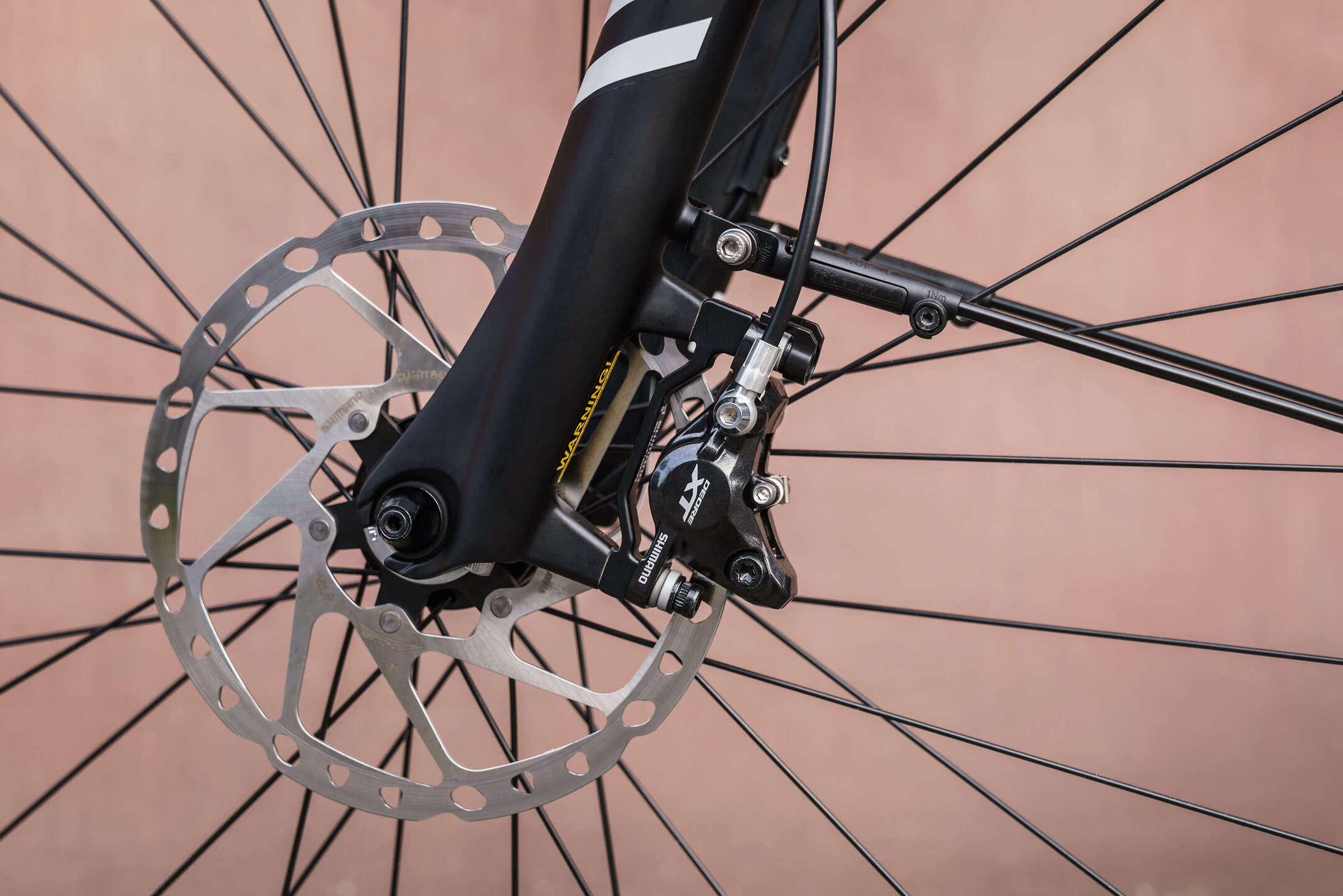Disc brakes
In order for a bicycle to comply with the rules of road safety prescribed in Germany, it must be equipped with two independent brakes. The law does not prescribe any specific brake system.
How do disc brakes work?
A disc brake consists of the brake lever, the brake line, the brake caliper, the brake pads and the brake discs.
When you operate the brake lever on the handlebar, the energy from your hand is transmitted to the brake caliper via the brake line. This energy then presses the brake pads against the rotating brake discs. Depending on the hand force applied to the brake lever, the braking effect changes.

What is the advantage of disc brakes?
Disc brakes have several advantages over other brakes.
- Disc brakes have greater braking performance in wet conditions.
- Operating a disc brake on a bicycle requires 20% less hand force compared to other common braking systems.
- Disc brakes do not wear on your rims. This means that overheating of the rims on a downhill ride is not a danger with disc brakes.
- Disc brakes are characterised by very long durability.
- Disc brakes are low maintenance.
- Disc brakes are self-adjusting (hydraulic disc brakes)
If you would like to know if disc brakes can be retrofitted onto your existing bicycle, ask your dealer.
What kinds of disc brakes are there?
There are different designs and models of disc brakes; most can be classified into one of two categories: mechanical or hydraulic disc brakes.
1. Mechanical disc brakes
With mechanical disc brakes, the energy to operate the brake is transmitted via a Bowden cable. This system uses specific brake levers and calipers.
2. Hydraulic disc brakes
With hydraulic disc brakes, the energy is transmitted via a brake fluid. This works much better than mechanical transmission, as there is little friction loss. This has a positive effect on braking power and control.
Different disc brakes can be selected depending on the intended use. These vary in their number of brake pistons.
2-piston disc brake
This brake has two pistons per caliper. This means that each piston is equipped with a brake pad, with the size of the piston and the brake pad matched to each other.
4-piston disc brake
This system relies on the same principle as the 2-piston disc brake. However, here two more brake pistons are used, which maximises the braking force.
What should I consider when looking at disc brakes?
To ensure that you are safe on the road with your disc brakes, you should pay attention to the following things:
1. Practise braking
As less hand force is required with a disc brake, braking should be done carefully, and you should spend a little time practising full braking.
2.'Breaking in' your brakes
New disc brakes must first be broken in. Do this as follows: Accelerate your bicycle to a medium speed on a flat, safe surface. Now carefully engage one of your two brake levers until you have braked down to about walking speed. Now do the same with the other brake lever. Repeat this at least 20 times, gradually increasing the braking force.
3. Inspection & Care
You should check your brake system regularly. Is any oil leaking? If so, visit your bicycle dealer. Also check the braking point. Can you pull your lever all the way to the handlebar or does braking feel 'spongy'? If so, then you probably need to bleed your disc brake. Check your owner's manual or ask your bicycle dealer for advice.
In addition, proper care is important for long brake lifetime. Read more about this in the next section.
